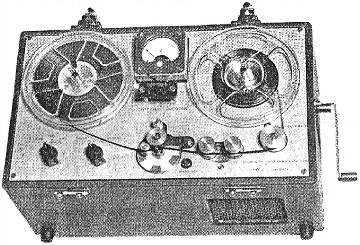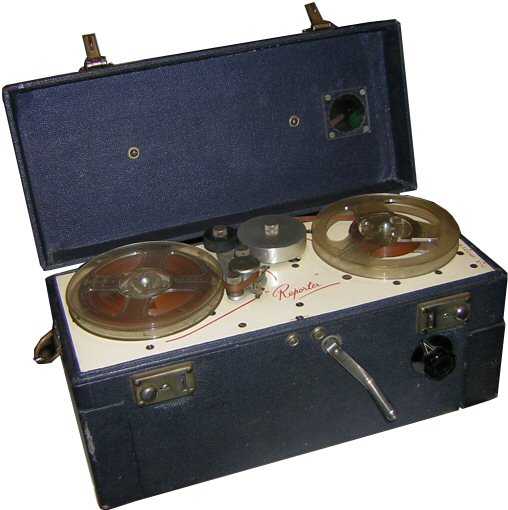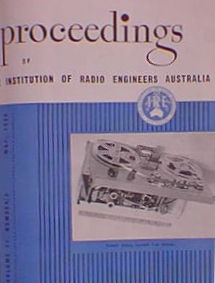
I believe that this was the only commercially available Australian tape recorder using a clockwork motor. NAGRA and other manufacturers also made a portable tape recorders with clockwork motors in the early 1950's

This is another example of a clockwork tape recorder called "Reporter" origin unknown but some were used by the ABC during the 1950's.
Much of the information I have about Commonwealth Electronics CEB comes from the original operation and maintenance manual which was provided by Peter May. From the information I have there were seven tubes in the unit, 4 x 1U5 and 3 x 3V4. The heads where one of the first to use ferrite material, the use of ferrite particularly for the record head helped to reduce the power requirements of the bias oscillator. After some effort the designers were able to make the unit operate from two standard 67 1/2V HT batteries with discharge at a rate which was not unacceptably high. To reduce the battery consumption the filaments were switched off in the tubes which were not required for a particular mode.
In many types of modern battery operated electronic equipment there is some form of low battery indication, the CEB also has a low energy indicator. Switch SWB shown in the schematic CD1105 and in the rear view of the motor in drawing A5105 was used to trigger an alarm indicating that the motor spring needs winding.
This recorder was designed for use by radio reporters for on-the-spot interviews and according to the advertising of the time these units were used to record the events at the 1956 Melbourne Olympic Games.

A picture of this tape machine was used on the front cover of the Proceedings of the IRE Australia in May 1956, later that year a paper titled: "The Development of a Miniature Battery-Operated Tape Recorder" by W. R. Nicholas and A. D. Hildyard. was published in the November issue.
The CEB pictured here is held in the collection of the Sound Preservation Association of Tasmania.
